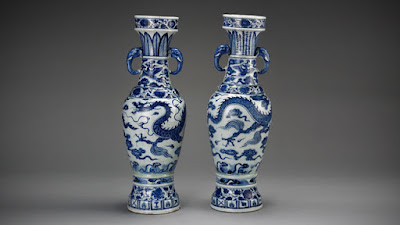History Ruling in China - Victoria and Albert Museum, Imperial Life
History Ruling in China - Victoria and Albert Museum, Imperial Life
Ruling in China
 |
| Ming Dynasty Yongle Period (1403-1425) |
A Unique Being
The emperor of China was the source of all power. Although statesmen and administrators supported the emperor in governing the country, he was at the head of the hierarchy, the highest authority in the land. There was no possibility of challenging imperial power, short of overthrowing the dynasty. In this respect China differed from Islamic or Christian states. For example, the popes of medieval Europe argued with the rulers about who was the most important.| Imperial Court Robe Victoria Albert Museum |
Letter from a Chinese official to the Emperor, 1712
Li Xu reverently memorializes:My servant brought back by secret palace memorial on 2/15. After I opened it, I read Your Majesty's vermilion endorsement…Public opinion in the South holds that the governor-general never sold any zhu ren degrees [qualifications for provincial officials], but because the governor was too suspicious and hated the governor general, he went to far as to impeach him. Now both of them have been discharged. Although the governor is an honest official, he often failed to make clearcut decisions. Therefore too many people were arrested when he handled disputes. The governor-general never took any money. He is also very able and quick-witted. All of the people love him in their hearts, and the localities [under his jurisdiction] have all benefited [from his good administration]. This is the nature of the public comment on this issue. I therefore report to Your Majesty according to your secret instructions…
The vermilion endorsement written by the emperor reads:
Continue your secret inquiries; and report your findings swiftly.
TO read More Click HERE~!


Comments
Post a Comment
If you have any questions or comments please send us a message. Or use the Contact Us tab at the top of the page.